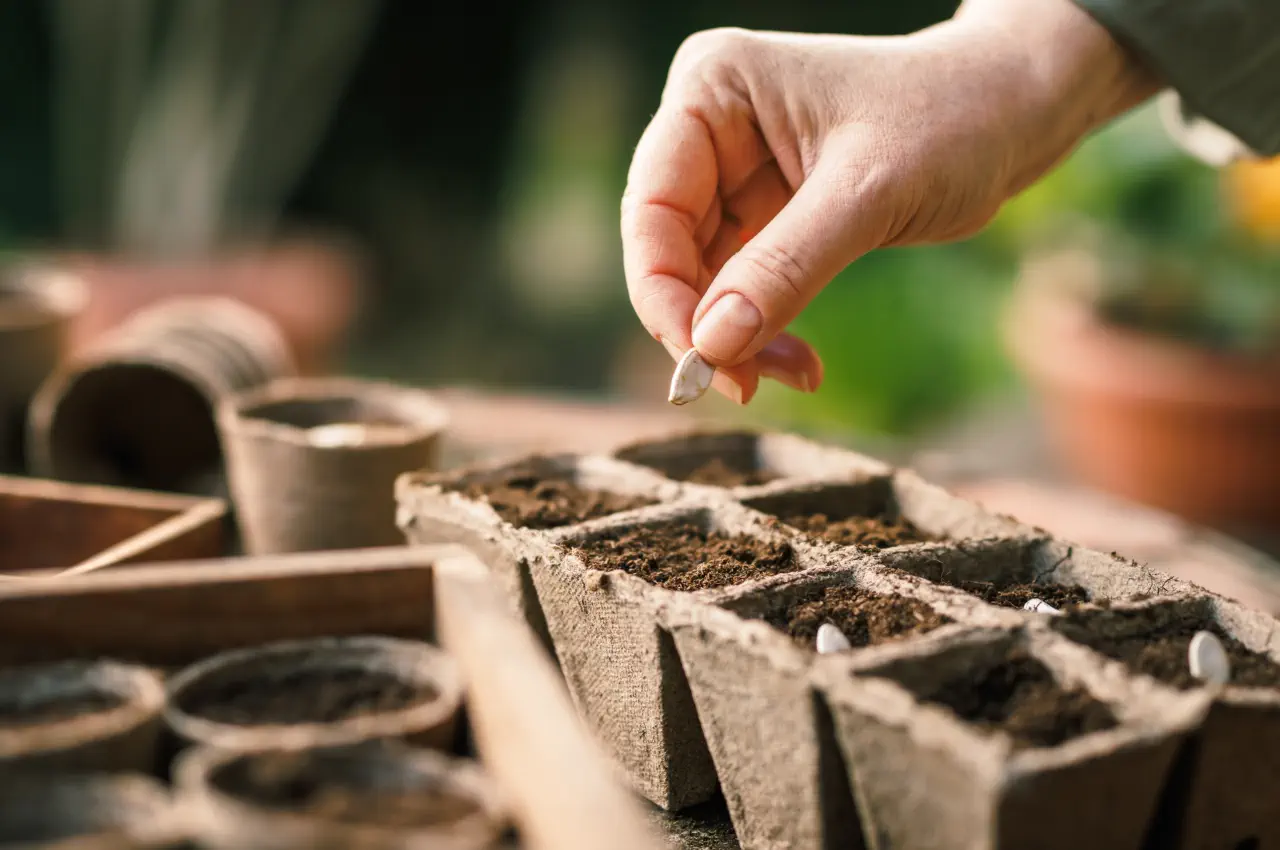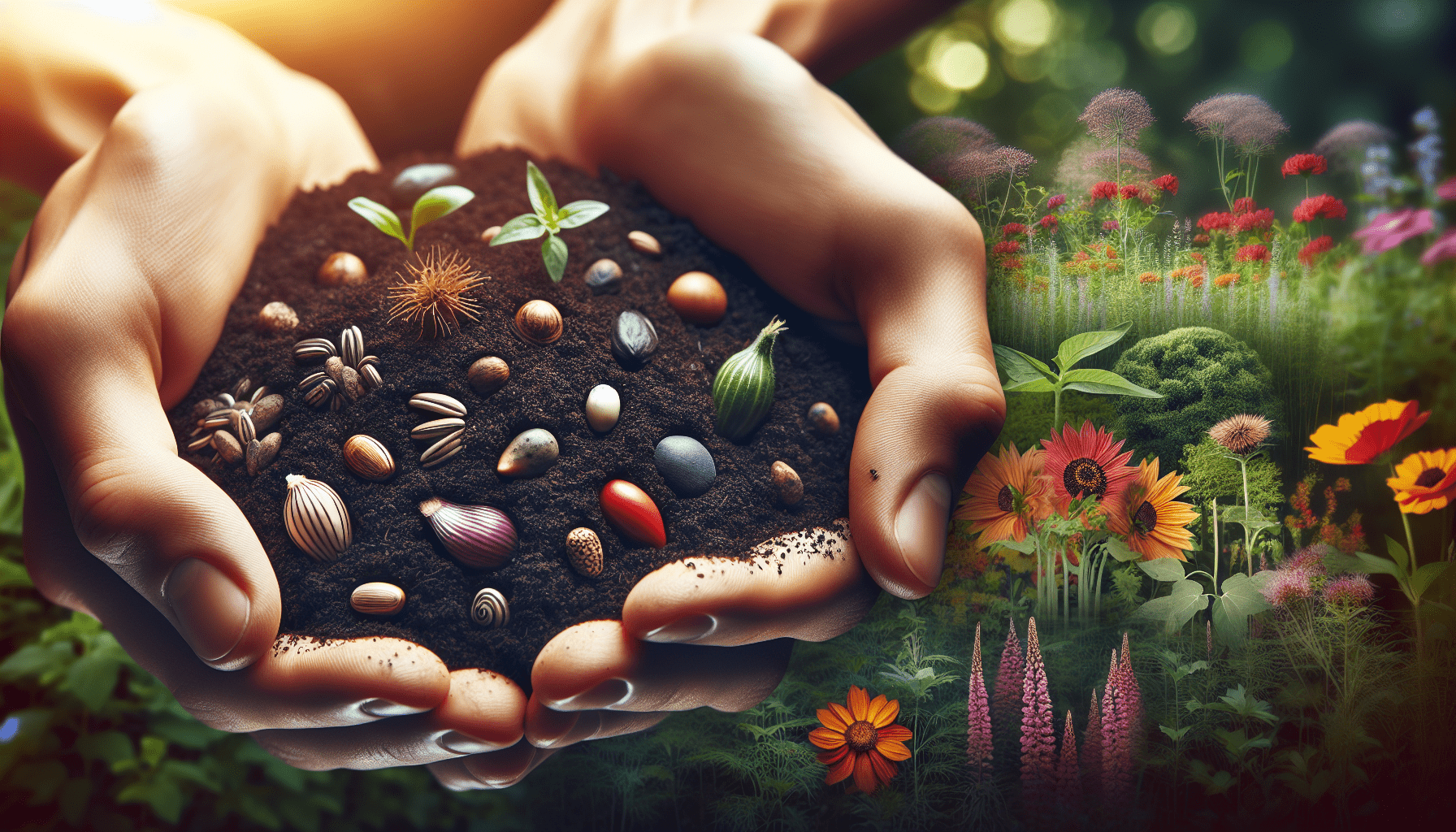This post may contain affiliate links which means I may receive a commission for purchases made through links. Learn more on my Private Policy page.
Welcome to your journey into the world of gardening with the “Beginner’s Guide to Seed Selection and Planting.” In this insightful guide, you’ll discover how to choose the right seeds for your garden and the essential steps to ensure your plants thrive. Whether you’re growing herbs, vegetables, or flowers, this guide will provide you with the knowledge and confidence to start planting and enjoy the beauty and rewards of your very own garden. So roll up your sleeves and get ready to dig into the basics of creating a lush, flourishing garden from the ground up! Have you ever wondered how to start your own garden, but felt overwhelmed by the numerous choices of seeds and the planting process? You’re not alone! Beginning a garden can seem like a monumental task, particularly when you’re new to the world of gardening. But don’t worry, this guide will walk you through everything you need to know about seed selection and planting in an easy, digestible way.
Understanding Seed Basics
Before diving into seed selection, it’s important to grasp some basic concepts. Understanding terms and classifications will help you make informed decisions for your garden.
Seed Types
Seeds can be broadly categorized into various types. Knowing the differences can help you choose the best seeds for your needs.
Heirloom Seeds
Heirloom seeds are plants that have been cultivated for at least 50 years. They are open-pollinated, which means that they are naturally pollinated by insects, birds, or the wind. The main advantage of heirloom seeds is that they produce plants with consistent traits year after year.
Hybrid Seeds
Hybrid seeds are created by cross-pollinating two different types of plants. The goal is to produce a plant with desirable traits, such as disease resistance or higher yield. However, seeds saved from hybrid plants won’t produce consistent results if replanted.
GMO Seeds
Genetically modified (GMO) seeds are scientifically altered to achieve specific traits. While they can provide higher yields and can be pest-resistant, they are often surrounded by ethical and environmental concerns.
| Seed Type | Description |
|---|---|
| Heirloom | Consistent traits, open-pollinated, cultivated for at least 50 years |
| Hybrid | Cross-pollinated for desirable traits, inconsistent if replanted |
| GMO | Scientifically altered for specific traits, often controversial |
How to Choose the Right Seeds for Your Garden
Now that you know the types of seeds available, let’s talk about how you should choose the right ones for your garden.
Climate Considerations
Your local climate plays a significant role in what plants you can successfully grow. Check the USDA Plant Hardiness Zone Map to know your zone and select seeds that perform well in that climate. For example, plants that thrive in coastal areas might not be suitable for a dry, arid environment.
Soil Type
Assess your soil before selecting seeds. Different plants prefer different soil types, ranging from loamy to sandy to clay. You can conduct a simple soil test at home or take a sample to your local extension office for more specific results.
| Soil Type | Plant Preferences |
|---|---|
| Loamy | Most plants, but especially vegetables |
| Sandy | Root vegetables, herbs |
| Clay | Shrubs, perennials |
Space Availability
Before you get carried away, think about how much space you have for planting. Some plants need more room than others. Climbing plants like beans and cucumbers require vertical space, whereas herbs and leafy greens generally need less room.
Skill Level
Some plants are easier to grow than others. If you’re a beginner, opt for seeds that are known to be forgiving and low-maintenance. Lettuce, radishes, and marigolds are excellent choices for new gardeners.
Time Commitment
Consider the amount of time you can dedicate to your garden. If you have a busy lifestyle, go for low-maintenance plants. Alternatively, if you can commit more time, you might enjoy plants that require more attention but offer rewarding yields.

Steps to Prepare for Planting
Once you’ve selected your seeds, the next step is to prepare for planting. Proper preparation can make the difference between a thriving garden and a lackluster one.
Soil Preparation
Healthy soil is the foundation of a successful garden. Begin by clearing the area of weeds, rocks, and debris. Use a garden fork to loosen the soil, allowing for better root penetration and water drainage.
Fertilizing
Adding compost or organic matter enriches the soil. You can either buy compost or make your own. Spread the compost evenly over the soil and till it in. This improves soil structure and fertility.
Choosing the Right Location
Light is crucial for plant growth. Ensure your garden spot receives adequate sunlight—at least six hours of direct sunlight for most vegetable and flowering plants.
Watering Systems
Decide on how you will water your garden. Options range from a simple hose to automated drip irrigation systems. Efficient watering is particularly important in the first few weeks after planting.
Planting Calendar
Following a planting calendar is key for optimal growth. Most seed packets come with planting instructions, including the best time to plant the seeds. Align your planting schedule with this guide to maximize your garden’s success.
Planting Your Seeds
You’re almost ready to get your hands dirty! Here’s how you can plant your seeds effectively.
Direct Sowing vs. Starting Indoors
Decide whether you will sow your seeds directly into the garden soil or start them indoors.
Direct Sowing
This method involves planting seeds directly in the garden bed. It’s suitable for plants that don’t transplant well, like carrots, radishes, and peas.
Starting Indoors
Starting seeds indoors gives you a head start on the growing season. This is beneficial for plants with a longer growing period, like tomatoes and peppers. Use seed trays and place them in a warm, well-lit area.
| Method | Best For |
|---|---|
| Direct Sowing | Carrots, radishes, peas |
| Starting Indoors | Tomatoes, peppers, tender flowers |
Proper Planting Depth and Spacing
Consult your seed packet for detailed instructions on planting depth and spacing. As a general rule, plant seeds at a depth of about twice their width, and follow the recommended spacing guidelines to avoid overcrowding.
Watering Seeds
Adequate moisture is essential for seeds to germinate. After planting, water the soil gently to avoid washing away the seeds. Keep the soil consistently moist but not waterlogged during the germination period.

Caring for Your Seedlings
Once your seeds have sprouted, they become seedlings. Here’s how to care for them during this crucial stage.
Providing Adequate Light
Seedlings need plenty of light to grow strong. If they’ve been started indoors, place them near a sunny window or under grow lights. Outdoors, make sure they are situated in a spot that receives ample sunlight.
Thinning Seedlings
If multiple seeds were sown per hole or too closely together, you’ll need to thin them out to prevent competition for nutrients and space. Snip the weaker plants at the base to allow the stronger ones to thrive.
Hardening Off
Before transplanting indoor-grown seedlings to your garden, they need to be acclimatized to the outdoor conditions. This process, known as hardening off, involves gradually exposing the seedlings to outside conditions over a week to minimize transplant shock.
Feeding and Watering
Continue to water your seedlings regularly, making sure the soil remains moist but not soggy. Depending on the plant type, you might also need to provide additional nutrients through a balanced fertilizer.
Common Problems and Solutions
Every gardener faces challenges. Here are some common problems you might encounter and how to address them.
Pests
Insects like aphids and caterpillars can wreak havoc on your plants. Use organic deterrents like neem oil or introduce beneficial insects like ladybugs to help control the population.
Diseases
Fungal and bacterial diseases can spread quickly and destroy your seedlings. Practice crop rotation and opt for disease-resistant varieties to mitigate these risks.
Poor Germination
Sometimes seeds fail to germinate due to old age, improper planting depth, or inadequate water. Always use fresh seeds from reputable sources and follow planting and care instructions closely.
Nutrient Deficiencies
Yellowing leaves often indicate a lack of essential nutrients. Conduct a soil test to identify deficiencies and amend the soil with the appropriate nutrients.

Harvesting and Beyond
The journey doesn’t end with planting; the rewarding part is definitely in the harvest!
Knowing When to Harvest
The best time to harvest depends on the vegetables or flowers you’ve planted. Refer to your seed packets or conduct a quick online search to establish the optimal harvest time for each plant.
Proper Harvesting Techniques
Use sharp, clean tools to avoid damaging the plant and causing disease spread. For most plants, morning is the best time to harvest when they are crisp and fresh.
Storing Seeds
If you’d like to save seeds for the next planting season, make sure they are thoroughly dried before storing them in a cool, dark place. Label them properly to avoid confusion later.
| Task | Best Time | Best Practices |
|---|---|---|
| Harvesting | Morning | Use sharp, clean tools |
| Seed Storage | Post-harvest, thoroughly dried | Label and store in a cool, dark place |
Tips for Sustainable Gardening
Sustainability is an important aspect of modern gardening. Implementing a few key practices can make your garden more eco-friendly.
Composting
Turning kitchen scraps and garden waste into compost enriches your soil and reduces waste. It’s a win-win!
Water Conservation
Use mulch to retain soil moisture and reduce the need for frequent watering. Rain barrels can also collect rainwater for garden use.
Organic Practices
Avoid synthetic chemicals. Opt for organic fertilizers and pest control methods to maintain a healthy and sustainable garden.

Conclusion
Starting a garden from the ground up can be an incredibly rewarding experience. By understanding the basics of seed selection and planting, preparing properly, and caring for your seedlings, you can create a thriving garden season after season. Remember, patience and persistence are key, and don’t be afraid to experiment to find what works best for you. Happy gardening!
This post may contain affiliate links which means I may receive a commission for purchases made through links. Learn more on my Private Policy page.

